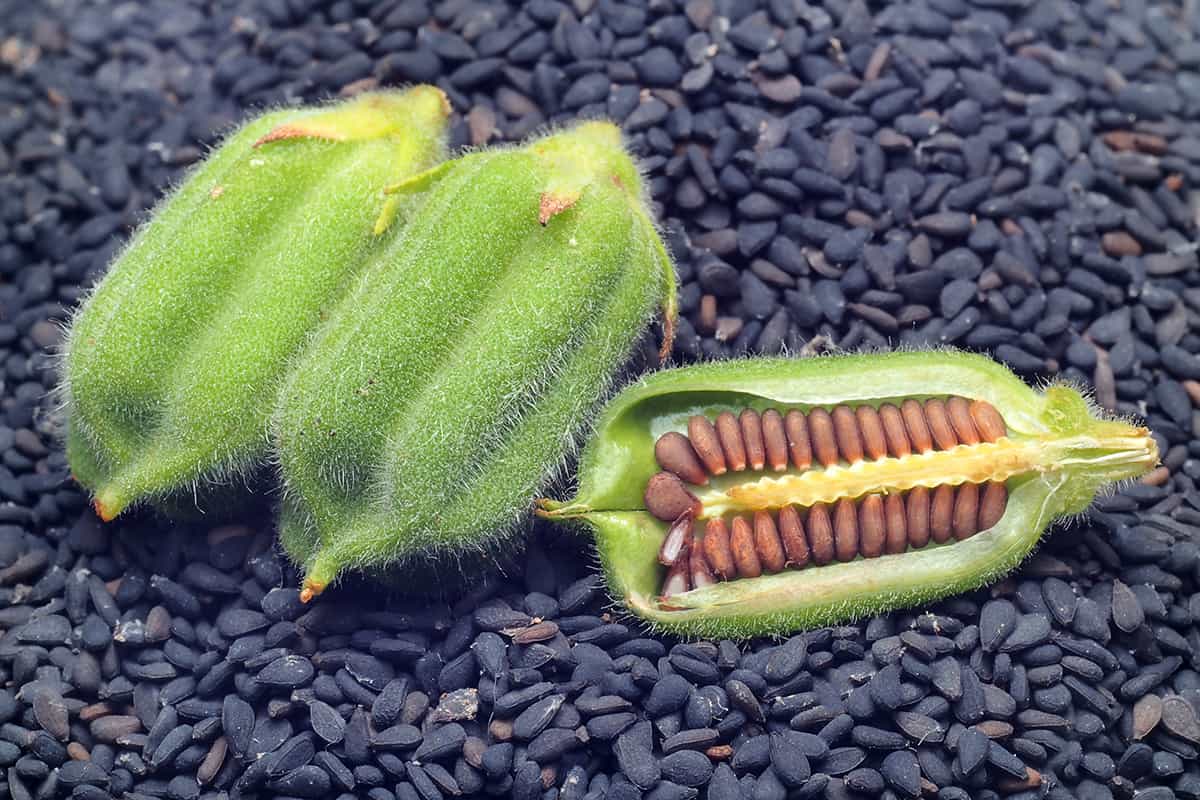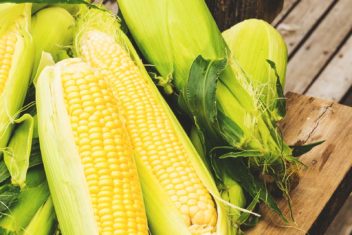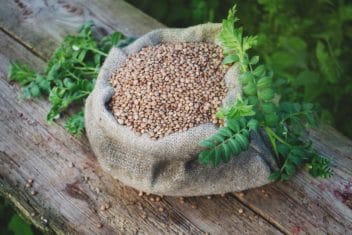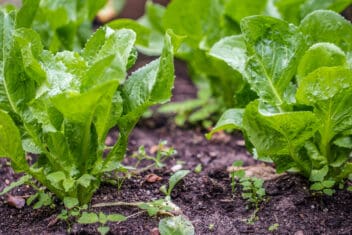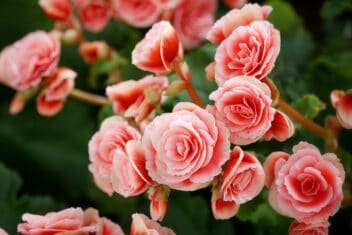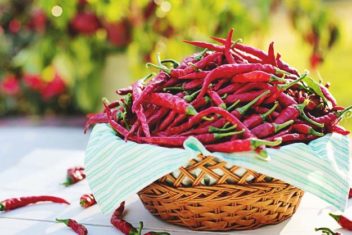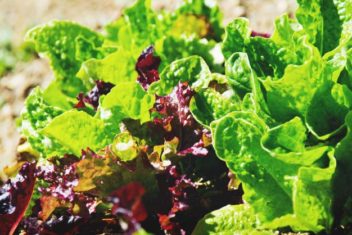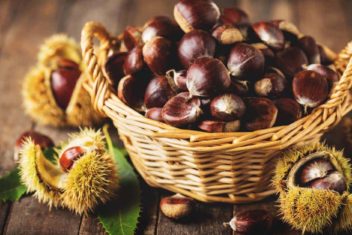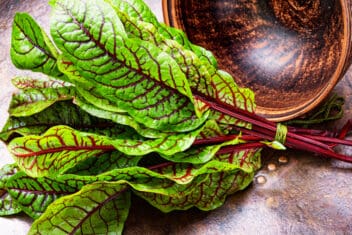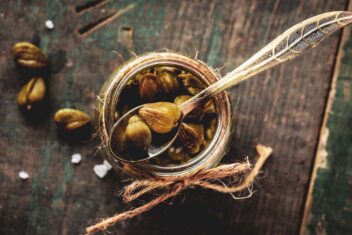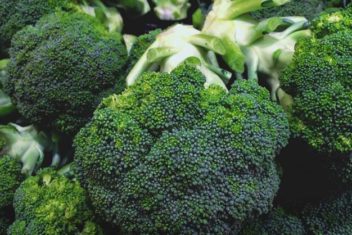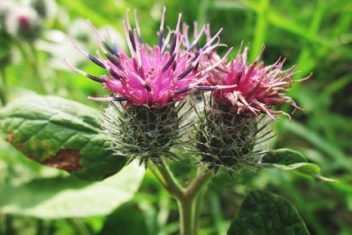One of the plants on my bucket list was always sesame. I hated buying the expensive seeds in the shop, so growing my own appealed to me. Even growing a small number of plants made all the difference.
Sesame plants are easy to grow, and harvesting is even easier. As long as you live in the right environment, sesame plants will succeed.
Sesame is a plant that loves it dry, so it even suits busy gardeners who forget to water now and then, or those in arid regions.
What are Sesame Seed Plants?
Sesame seed plants (Sesamum indicum) are annuals, which you usually find growing in tropical areas. It’s an oilseed crop and is thought to be one of the oldest crops cultivated in human history.
The plants are traditionally grown in Sub-Saharan Africa and India. That should give you an idea of the type of environment you need to grow sesame.
I’ve heard it said that if you can grow cotton, you can grow sesame. Both plants like similar conditions.
Growing up to three to five feet tall sesame plants are covered in flowers colored white, blue, or purple. They grow perfectly with other drought-tolerant plants like lavender, rosemary, and thyme.
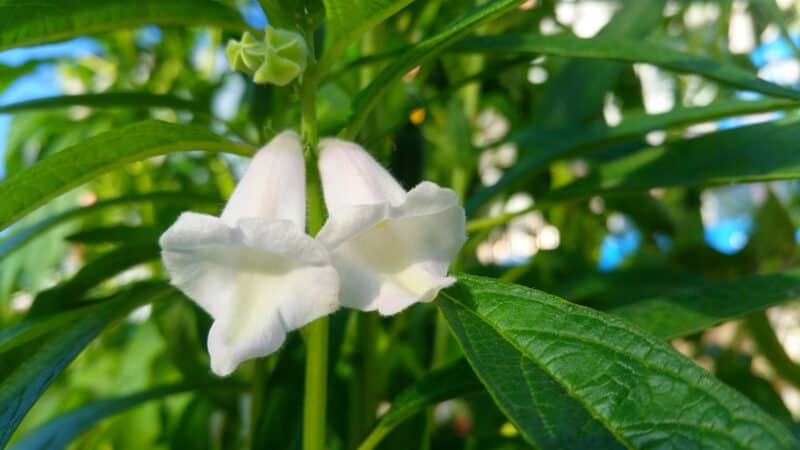
They look great in the garden, somewhat resembling foxglove when they blossom.
How to Plant Sesame Seeds
Sesame plants grow in USDA Growing Zones 10 and above. They love full sun and, once established, high temperatures. What they can’t stand are colder temps.
Anything under 68°F could stunt growth. Below 50°F and the plant will die.
If you live in zones 8 or 9, you can grow sesame seeds, so long as you start the plants indoors a month or two before you intend to plant them in the garden. Plants need about 100 days to reach maturity.
Aim for a neutral pH. I’ve found anywhere between 5 and 8 is suitable. You’ll need sandy, loamy soil with minimal salinity.
Give each plant about three feet distance between the next. If you’re short on space, two feet will suffice.
Planting Seeds
It’s best to plant sesame seeds in seed-raising pots rather than directly in the garden. This will increase your germination rate.
You can plant sesame seeds that you buy from the shop, but they must be fresh, not fried or roasted, and not treated in any way.
For this reason, I source seeds from a gardening center and have never had a problem with germination.
Sow about six weeks before the traditional last frost. Sprinkle on the top of your medium and cover lightly. Keep moist until you see little green shoots piercing the soil.
Sesame loves moisture up until germination, so use a spray bottle to keep everything moist. Once germination takes place, water once a week.
Sesame seeds need quite a specific range of temperature. The best germination rates come from 68ºF to 75ºF. This should give you germination in around 14 days.
Planting Seedlings
Once your plants are big enough to handle easily, transplant them into the garden, ensuring full sun and soil that drains well. Clay soil that holds water will kill your sesame plant.
Plant every two or three feet in rows three feet apart. You will need a good number to make harvesting worthwhile.
There are about 80 to 100 seeds per pod and multiple pods per plant. I plant 12 to 15 plants for a modest harvest.
Caring for Sesame Plant
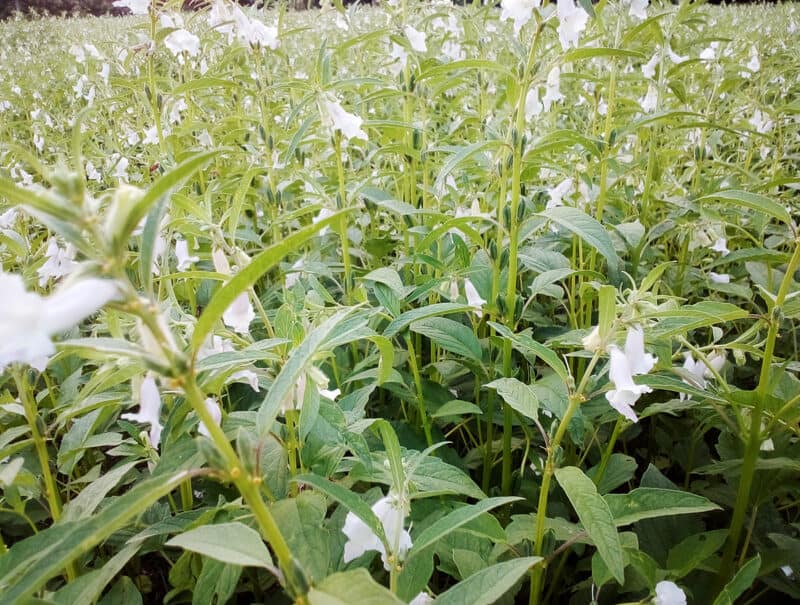
Ensure you dig in well-rotted manure before transplanting the sesame plants. This should give the plant sufficient nutrients for the season.
Sesame plants have deep roots and tend to draw nutrients from deep within the ground.
If you find that you need to use fertilizer, only apply up until the green buds of flowers appear. By this time, the plant will have sufficient nutrients to produce seeds.
Water
Sesame plants need water up until germination. After this, they are drought-friendly and need minimal watering.
For this reason, don’t plant near other plants that need plenty of regular watering.
Sesame is known to grow well in drought-type conditions, and overwatering will cause problems for the plant’s health.
If the soil holds water, sesame is likely to turn up its toes and die. Don’t water overhead, as this is likely to mean too much moisture on the leaves.
Pruning
You don’t necessarily have to prune sesame plants, but they are indeterminant plants, so they often get scraggly.
I don’t prune unless the sesame plant becomes too scraggly or long and weak.
Companion Planting for Growing Sesame
Plant sesame with any drought resistant plant or a plant that doesn’t require constant watering.
Try planting sesame with:
- Bell pepper
- Eggplant
- Okra
- Beans
- Sweet Potato
- Tomatillo
- Sweetcorn
Common Problems and Solutions for Growing Sesame Plants
Sesame seed plants are resistant to most pests and diseases, but problems do occur. Modern cultivars have been developed with commercial production in mind and as few problems as possible.
Depending on your variety, other problems in your garden, and the weather, you may face some of the following common issues.
Bacterial Leaf Spot
This shows up in different ways including black or brown spots, blackened leaf edges, or light-colored spots with a darker halo. It often appears when there is too much moisture in the air.
Cool conditions (especially when it’s wet) are often the culprit, as is overhead watering.
You can use copper spray, but this is only effective in the early stages of the disease.
Remove all debris from the garden, rotate crops, and allow plenty of airflow. Remove infected foliage as soon as the disease appears.
Fusarium Wilt
This disease causes yellowing of foliage and stunted growth.
Here’s our guide to identifying, treating and avoiding fusarium wilt.
Sesame Root Rot
Although rarer in modern sesame than the other listed diseases, sesame root rot can make an appearance. This is especially true in sandy, loamy soil.
At the seedling stage, the stem blackens and rots, causing death. On older plants, the stem and foliage begin to darken and the whole plant yellows, blackens, and wilts.
Remove any affected plants and destroy by burning or throwing away. Don’t compost.
There are seed and soil treatments available that you could use if you suspect this will be an issue. Speak to your local gardening expert for guidance as there are various rules around what you can use in most places.
Whitefly
These little pests can become prolific and cause a lot of damage to most plants in the garden, and sesame plants are no different.
Here’s our guide to identifying and dealing with whitefly.
Grasshoppers
We’ve all seen the damage grasshoppers do in huge numbers. In small numbers in a home garden, they are still a pest capable of killing your plants.
I prefer a natural approach, so I plant things grasshoppers find disgusting. If you have grasshopper problems, try planting sesame with:
- Tomato
- Sage
- Juniper
- Salvia
- Squash
Other pests such as cabbage looper, caterpillars, or cutworms are sometimes attracted to sesame.
They cause little damage in normal circumstances and can be controlled with regular sprays of neem oil and insecticidal soap, along with some Diatomaceous earth, if you think it’s necessary.
Harvesting and Using Sesame Seeds
The first thing to remember is that because sesame seeds are full of oil, they need to be dried properly for storage, or they will go rancid.
The easiest thing to do is make sure they dry out on the plant before you harvest them.
The flowers of sesame plants start maturing at the bottom, and these blossoms turn into seeds first. As the seeds dry out on the plant, the pod will begin to split.
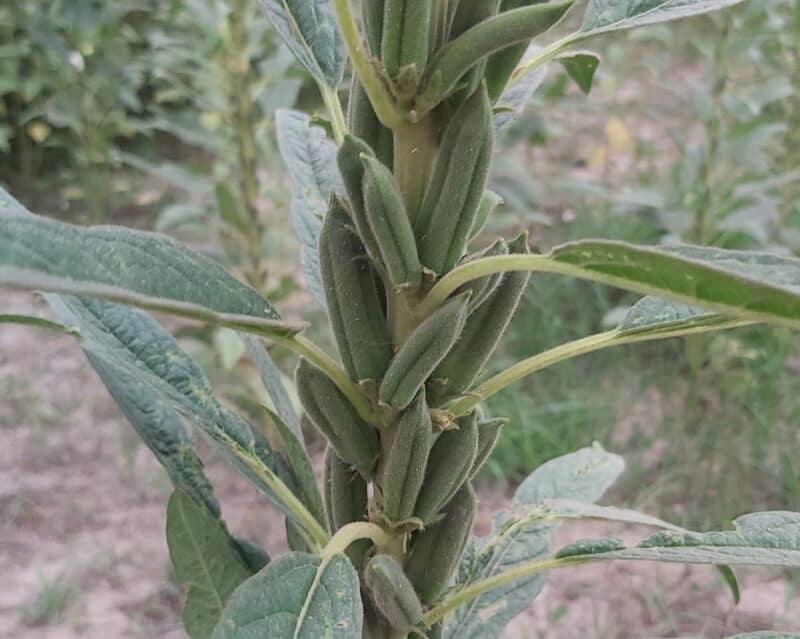
This is the time to carefully remove the pod from the plant and lay it down on a newspaper or similar in a warm, dry spot.
Yes, the seeds are tiny, but once you pop open the pod, you’ll see just how many one pod contains.
Over a short period of time, any plant leaves attached to the pod will darken, and the pods will become drier and more open. At this time, you can get a clean bucket or container and tap the pods against the sides to collect the seeds that fall out.
Keep an eye on the rest of the blossoms as they mature into seeds on the rest of the plant. Remember, the top will mature last.
You can also cut down the entire stem once most of the pods have ripened and hang it upside down to dry. Secure a paper bag around the plant to catch the seeds as they fall.

Some people prefer to dry roast the seeds in a pan to promote longer storage. I only dry mine naturally and haven’t had any issues. But, I do use them a lot, so they don’t have to wait long to be used up.
I sprinkle the seeds on homemade bread, chicken dishes, and salads. As a topping on bagels? Check. Grind them into tahini? You bet!
The seeds a vital ingredient in Japanese, Korean, Chinese, Indian, Middle Eastern, and Thia cuisines.
If I want to add that lovely nutty flavor to any dish, sesame seeds are my go-to choice.
I highly recommend growing sesame plants, even if it’s just to say you’ve grown your own seeds.
